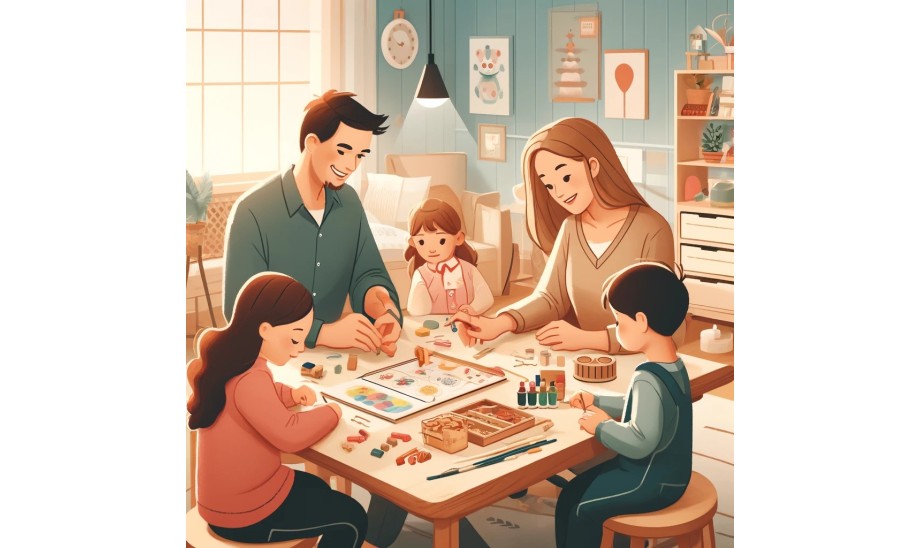
Creating Montessori Spaces at Home: Ideas and Tips
A Montessori space is a sanctuary of discovery, meticulously designed to nurture children's creativity and natural curiosity. At "Mi Rinconcito Montessori", we are dedicated to helping you create that magical atmosphere at home.
Introduction
In today's fast-paced world, where education and child development are at the forefront of parents' concerns, the Montessori method emerges as a guiding light for those seeking to foster independence, creativity, and a love of learning in their children. Creating a Montessori space at home does not require large investments or radical transformations, but rather a conscious and loving approach to preparing an environment that supports children's natural development. This article will guide you through the key ideas and practical tips for transforming your home into a true Montessori corner.
Creating a Montessori space at home is more than organising toys and furniture; it is about embracing a philosophy of respect, love, and trust in your children's potential. We hope this article inspires you and equips you with the tools you need to begin this transformation. Remember, every little change counts in the grand scheme of child development. Welcome to the wonderful journey of creating your own Rinconcito Montessori in home.
Fundamentals of the Montessori Method
Get ready to immerse yourself in the fascinating world of Maria Montessori and her revolutionary approach to education! Forget traditional classrooms; here we are talking about learning through play, respect for the pace of each child and an environment that invites them to discover the world in their own way. Let's take a look at the pillars of this very special approach.
The Story of Maria Montessori and her Enlightened Ideas
Imagine a woman ahead of her time, an Italian doctor and educator who realised that children are like little sponges that absorb knowledge from everything around them. Maria Montessori designed a method that puts the child at the centre of the educational universe, in a space where every element has the ultimate goal of their development and happiness.
The Prepared Environment: Your Home, a Learning Laboratory
For Montessori, the space where children spend their time is not just any place: it is a carefully prepared environment that invites them to explore, learn and grow. Think of a place where everything is at your children's fingertips, designed just for them and full of opportunities for them to embark on the adventure of learning.
Parents and Caregivers: The Guides for the Journey
In this journey of discovery, we adults are like the Sherpas on Everest. Our mission is to pave the way, to watch carefully and be there to support, but not to lead. It is to give children space to explore, to make mistakes and to learn for themselves, offering them love and respect in every step they take.
To create a Montessori space at home is to embark on an exciting adventure that will transform not only the physical space, but also the way we view and accompany the development of our children. With these basics, you are well on your way to making your home a place full of love, learning and discovery. Here we go! ⭐️
Basic Principles for Transforming Your Home the Montessori Way ⭐️
Let's give your home a Montessori touch! It's not just about moving furniture around, but adopting an attitude that celebrates your children's natural curiosity. Here are the secret ingredients to cooking up a Montessori home environment that's as fun as it is functional.
Independence and Accessibility
For the little ones to feel like the kings and queens of their castle, everything has to be at their level. Think about low shelves where they can pick up their toys and books without having to ask for help, and wardrobes where they can choose their clothes for the day. It's like telling them: "You can do it!".
Order and Structure
Nobody likes looking for something for hours, right? A tidy space not only looks nice, but also helps your children to know exactly where everything is. Imagine that every toy has its own little house... Goodbye, chaos! Hello, responsible little ones who know where everything goes after they've played.
Beauty and Simplicity
Less is more, especially in a Montessori space. Use soft colours and natural materials that invite calm and concentration, rather than overloading the senses with a thousand bright colours. Think of a colour palette that makes you feel zen and wooden toys that look like they come from an enchanted forest.
Connection with Nature
Mother nature is the best teacher, so why not invite her into your home? A few small plants here, a mini herb garden there, and voilà, you have a little green corner that inspires care and love for the environment. And whenever you can, play outdoors!
With these principles, you are ready to embark on the exciting adventure of creating a Montessori home. Not only are you designing a physical space, but you are planting the seeds of a love of learning, independence and connection to the natural world. Let's get to work and enjoy the creative process!
Montessori Spaces by Age
Creating a Montessori environment at home means adapting the space to the changing needs of your children as they grow. Let's give you some ideas on how you can do this, broken down by age to make it a breeze!
0 to 2 Years: Exploring the World
For the little ones, the world is a huge treasure to be discovered. Here, the important thing is:
Safe crawl areas: Large, safe spaces where they can move freely.
Mirrors at your height: So that they can discover and learn about themselves.
Easily accessible sensory toys: To stimulate their senses and encourage grasping and coordination.
From 3 to 6 Years: Great Little Discoverers
At this age, children are little explorers with an insatiable curiosity. Creating spaces that encourage their autonomy is key:
Seasons of practical life: Like toy kitchens, where they can imitate everyday activities.
Cosy reading corners: With books within reach to encourage a love of reading.
Manipulative learning materials: For them to experiment with numbers, letters and shapes in a concrete way.
Ages 7 to 12: Knowledge Adventurers
Children of this age are ready for greater challenges and deeper discoveries:
Customised workstations: Where they can concentrate on projects and tasks.
Research resources: Such as magnifying glasses, maps, and access to books and technology to explore their interests.
Spaces for creativity: Areas dedicated to the arts, music or science, allowing them to express themselves and experiment.
Each stage of a child's life brings with it new adventures and learning. Adapting your home with a Montessori approach is to give them a space where they can grow, learn and, above all, be happy. Remember, the important thing is to support their development while respecting their individuality and natural curiosity! ⭐️
Practical Ideas for Every Area of the Home
Turning your home into a Montessori oasis is easier than you think. Here are some super practical ideas for every corner of your home, so that the little ones can learn and explore at every moment of the day.
Cooking: Little Chefs in Action
The kitchen is not just for adults. Here, children can:
Have their own low shelf with safe cooking utensils, plates and glasses so they can prepare and serve their meals.
A learning tower for them to reach the worktop and participate in food preparation, encouraging their independence and practical skills.
Living Room: Learning and Fun
This common space can be a wonderful place for:
Create a reading corner with a low shelf filled with accessible books for children, along with cushions or a small tent to make it cosy.
Dedicate an area for puzzles and board games, where the family can get together and enjoy learning together.
Bedrooms: Dreams and Secrets
Bedrooms should be sanctuaries of peace and play:
Implement a low bed or a mattress on the floor. floor to promote the independence and safety of the youngest children.
Use organisers at their height to enable them to choose their clothes and toys, encouraging personal choices and responsibility.
Bathroom: Autonomy and Personal Care
The bath is perfect for practising daily living skills:
Set up a stool so that they can reach the sink and wash their hands or teeth by themselves.
Organise your toiletries in an accessible place so that they can take care of their personal hygiene independently.
Outdoor Area: Outdoor Adventures
Don't forget the garden or balcony, ideal spaces for:
Create a small vegetable garden or gardening area where they can learn about plants and nature.
Establish a play areawith elements that promote movement, such as a climbing rope or a sandbox.
Every space in your home can be transformed into an interactive and stimulating learning environment. By implementing these ideas, you can encourage your children's natural curiosity, helping them to develop their independence and love of learning. Let's get started!
Montessori Materials and Resources at Home

Entering the Montessori world doesn't just mean physically adapting your home; it also means carefully choosing the materials and resources that will foster your children's learning and development. Here are some tips for selecting and, if you are so inclined, creating your own Montessori materials.
Selection of Authentic Montessori Materials
Montessori materials are designed to be self-correcting and allow the child to explore and learn through error and experimentation. When looking for materials:
It prioritises quality and durability: Wood, metal and fabric materials outperform plastics in both feel and aesthetics.
Look for reputable suppliers: There are many shops specialising in Montessori materials; be sure to choose those with good references and reviews.
Consider your child's age and interests: Materials should be developmentally appropriate and aligned with what intrigues and motivates them to learn.
DIY: Creating Your Own Montessori Materials and Activities
If you like DIY or prefer a more economical option, many Montessori materials can be made at home. Here are some ideas:
Naming and sorting cards: Use pictures and real objects for children to match and sort.
Sound boxes: Fill small boxes or containers with different materials to create different sounds.
Practical living trays: Set up activities such as liquid transfer or tongs to develop hand-eye coordination and concentration.
Recommended Books and Online Resources
Knowledge is power, especially when it comes to education. To delve deeper into the Montessori method and find inspiration:
Maria Montessori's "The Absorbent Mind": An indispensable classic for understanding the philosophy behind the method.
Blogs and websites about Montessori:Many educators and parents share their experiences and practical advice online.
Online courses and workshops: Excellent for gaining a deeper understanding of the method and how to implement it at home.
Equipping your home with Montessori materials and resources is an exciting journey that will enrich your child's learning experience. Whether you buy specialised materials, create them yourself or educate yourself about the method, every step you take is an investment in their development and happiness.
Overcoming Common Challenges
Adopting a Montessori approach at home is an exciting adventure, but like any good adventure, it can present its challenges. Here are some strategies for overcoming the most common obstacles, so that you can create a rich and stimulating learning environment without the hassle.
Small Spaces and Limited Budgets

You don't need a mansion or a bank full of gold to create a Montessori space at home. Here are some tips:
Optimise space: Use multifunctional furniture and smart storage. Shelves and boxes can organise materials and toys, maintaining order and accessibility.
DIY: Many Montessori materials can be made at home with inexpensive resources. Search online tutorials to create naming cards, puzzles and more.
Second hand: Check flea markets, thrift shops or swap groups. Often, you can find quality materials at a fraction of the price.
Sharing Spaces Between Siblings of Different Ages
Creating a Montessori environment that works for children of different ages can be challenging, but it is not impossible:
Designated areas: It assigns specific areas for each child, adapted to their interests and level of development, also allowing common spaces where they can interact and learn together.
Shared materials: Select some materials that are appropriate and challenging for various ages. Building blocks, musical instruments and art materials are often a hit.
Maintaining Order and Children's Interest
Keeping children interested and engaged can be challenging, especially when the novelty of the materials wears off.
Rotation of materials: It is not necessary to have all toys and materials available all the time. Rotate materials every few weeks to maintain interest.
Involve children in the choice: Allow your children to choose some of the materials or activities. This increases their interest and engagement.
Observe and adapt: Be attentive to your children's changing interests and adapt the environment as needed. Sometimes a small change can renew their enthusiasm for learning.
Implementing Montessori at home is an ongoing learning process for both children and adults. Through creativity, patience and a little ingenuity, you can overcome these challenges and create an environment that nurtures a love of learning and independent development.
Benefits of Implementing Montessori at Home
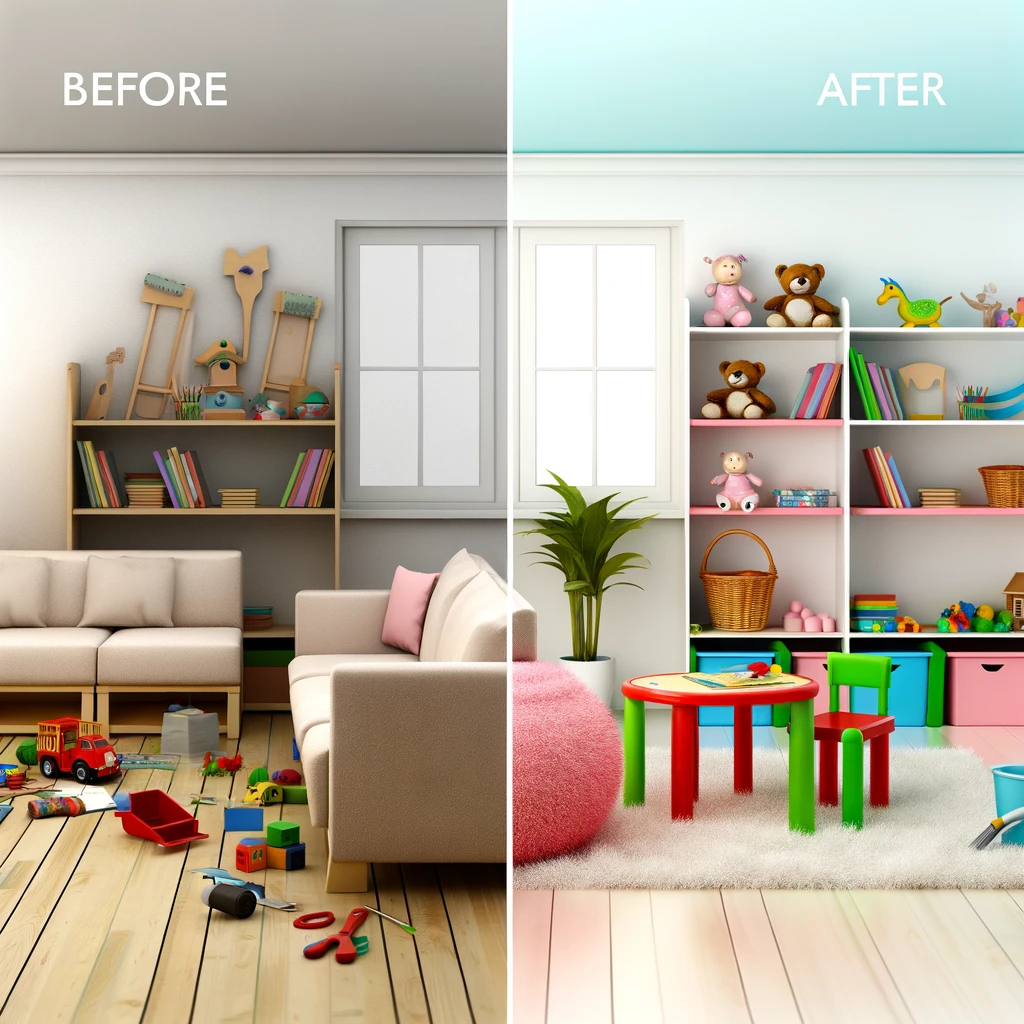
Bringing Montessori principles into the heart of your home doesn't just transform spaces; it transforms lives. This educational philosophy, centred on respect, independence and a love of learning, brings invaluable benefits to children and adults alike. Let's take a look at some of the most significant:
Development of Independence and Self-Esteem
One of the cornerstones of Montessori is to foster independence from an early age. By allowing children to choose their activities, solve problems and perform everyday tasks on their own, they not only gain practical skills but also build a strong sense of self-efficacy and self-confidence.
Fomento de la Curiosidad y Amor por el Aprendizaje
In a Montessori environment, learning comes naturally from children's innate curiosity. Given the freedom to explore their interests at their own pace, they develop a love of learning that extends beyond the classroom and lasts a lifetime.
Strengthening the Family Bond
Implementing Montessori at home offers abundant opportunities for shared activities between parents and children, strengthening family bonds. Working together on household chores, art projects or science explorations becomes quality time that benefits everyone.
Preparing for the Future
Montessori children learn to be critical thinkers, to collaborate with others and to be resilient in the face of challenges - essential skills for future success. By cultivating an environment that values responsibility, creativity and mutual respect, we are preparing our children not only for school but for life.
Environment of Respect and Peace
Montessori promotes an atmosphere of respect: respect for oneself, for others and for the environment. This atmosphere of acceptance and peace instils in children values of empathy, cooperation and multicultural understanding.
In the end, adopting Montessori at home goes beyond providing an alternative education; it is choosing a path that guides the whole family towards a joint, harmonious and conscious growth. It is a journey filled with discovery, love and a deep appreciation for the beauty of learning in all its forms.
Success Stories and Case Studies

Implementing the Montessori method at home is a unique and personal journey for each family. Through this section, we want to share inspiring success stories and case studies that illustrate the positive impact of Montessori at home. These narratives not only serve as proof of how effective the Montessori approach can be, but also offer valuable lessons and practical advice.
Transforming Learning at Home
Imagine a family that began their Montessori journey with simple changes to their living room, introducing low shelves with accessible materials and a small work space for each child. Over time, these small adjustments led to a complete transformation in the way their children interacted with their environment, fostering independence, concentration and a love of self-directed learning.
A Space for All
Another remarkable story is that of a home where children of different ages share a Montessori space harmoniously. Through personalised work areas and carefully selected materials, each child can explore their interests at their own pace, while learning from each other and strengthening their fraternal bonds.
Overflowing Creativity
One particularly inspiring case study involves a family who transformed their basement into a Montessori science lab. This dedicated space not only offered the children a place to experiment and discover, but also became the focal point for creativity and experimentation, demonstrating that with imagination, any area of the home can become an enriching learning environment.
Before and After: Transformations of Montessori Spaces
Finally, the section is enriched with powerful visual 'before and after' stories, showing how unused or conventional spaces have been reinvented into vibrant Montessori areas. These transformations are not only testament to the power of design and educational intent, but also inspire families to see the potential for learning in every corner of their home.
These stories and case studies are a reminder that the road to Montessori at home is as much about the destination as it is about the journey. With dedication, creativity and love, every family can create an environment that not only enriches their children's education, but also weaves lasting memories and builds a solid foundation for learning and growth.
El Viaje Montessori en Casa con Mi Rinconcito Montessori

Adopting Montessori at home is much more than organising spaces and selecting toys; it is embracing a philosophy of life that deeply respects the natural learning process of children. Throughout this article, we have explored how to implement Montessori principles in different areas of your home, adapting them to the ages and developmental stages of your children, and we have shared inspiring stories that illustrate the positive impact of this approach.
Des de mirinconcitomontessori.com We hope this article has inspired you and equipped you with the tools you need to begin or enrich your Montessori journey at home. Remember that every little change counts and that the essence of Montessori lies in observing, following and supporting your child's natural development.
Creating a Montessori environment at home is an exciting adventure full of learning and growth not only for your children, but for the whole family. By embarking on this journey, you are laying the foundation for a future filled with a love of learning, respect for the environment and, above all, a strong family bond.
Welcome to the wonderful world of Montessori at home, where every day is an opportunity to learn, explore and grow together.


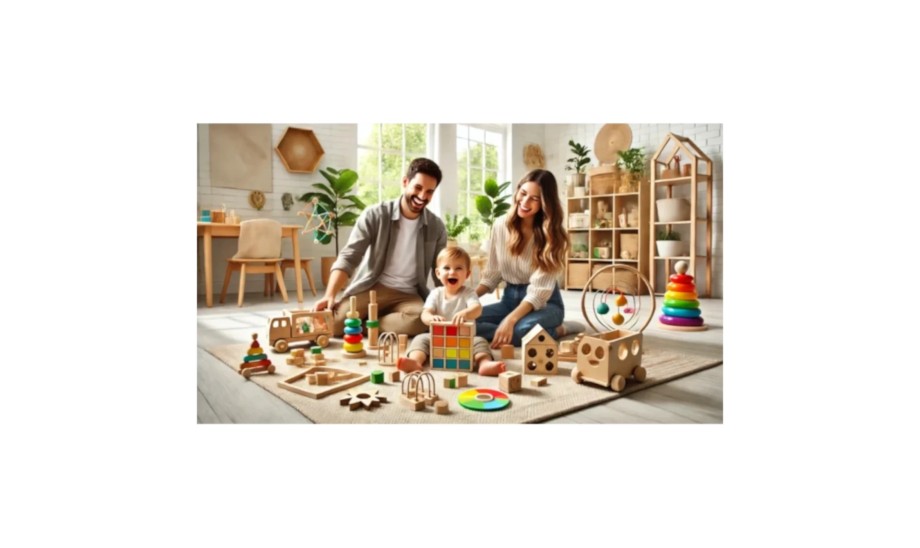
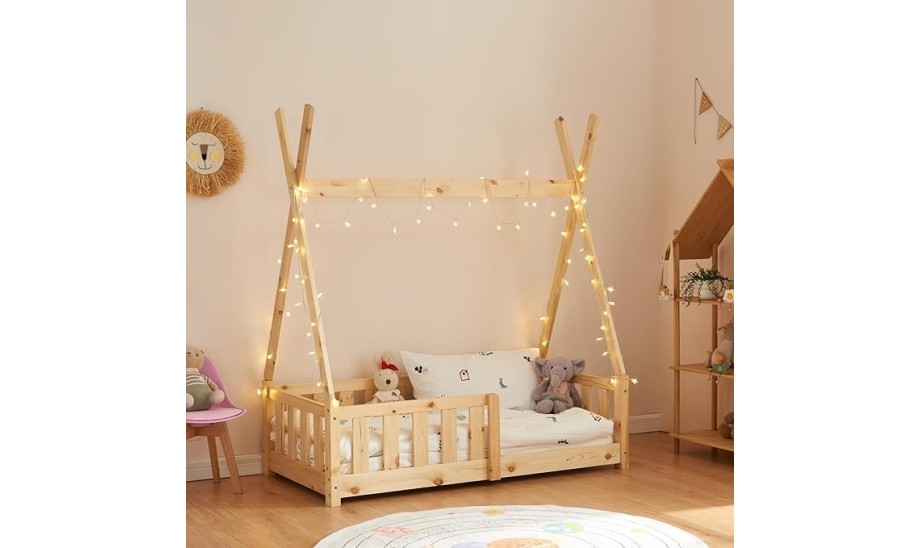
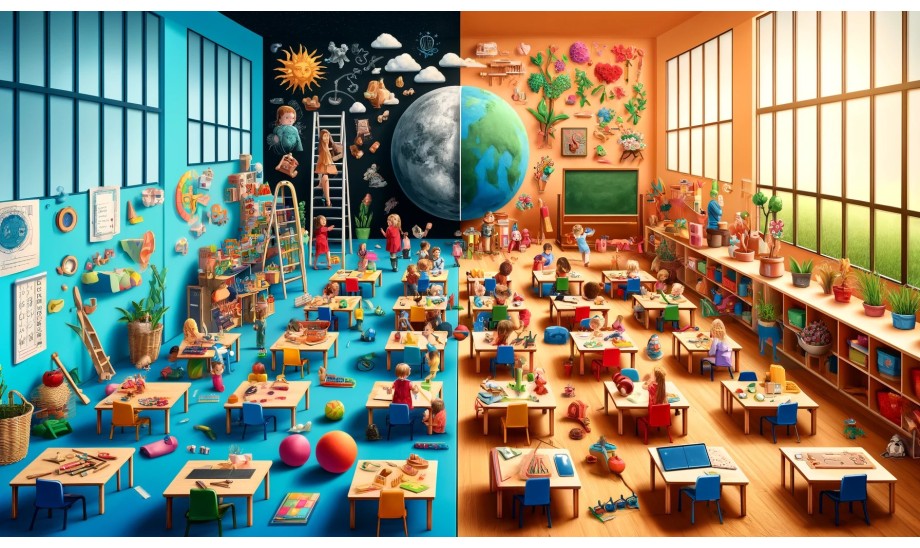
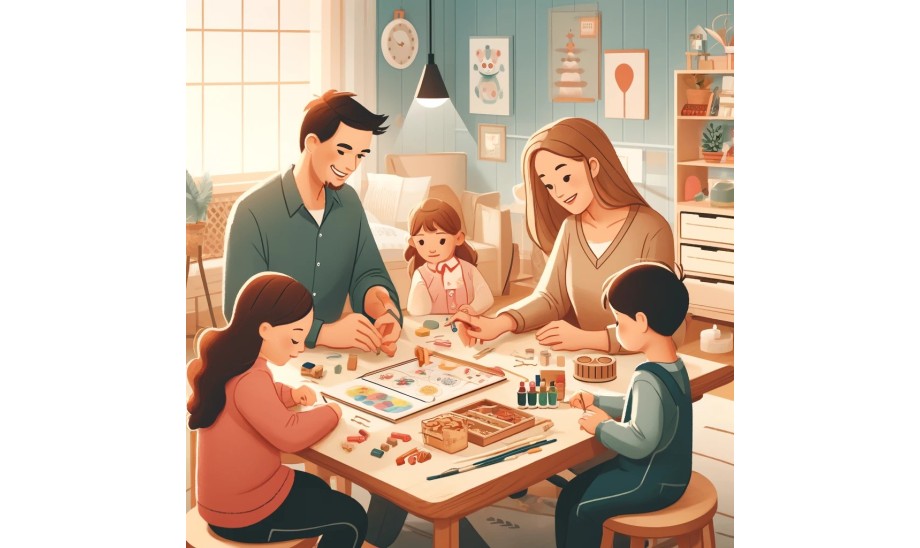
Comments
No comment at this time!
Leave your comment